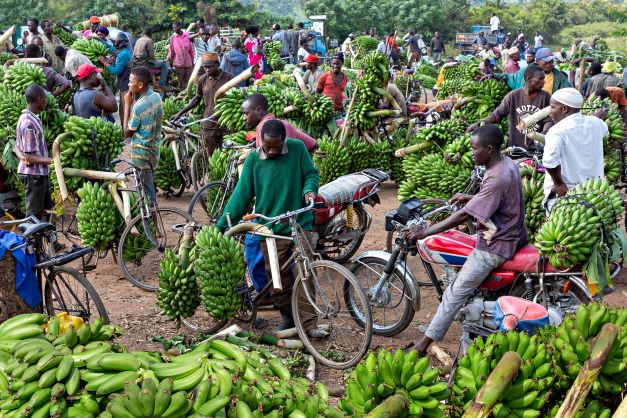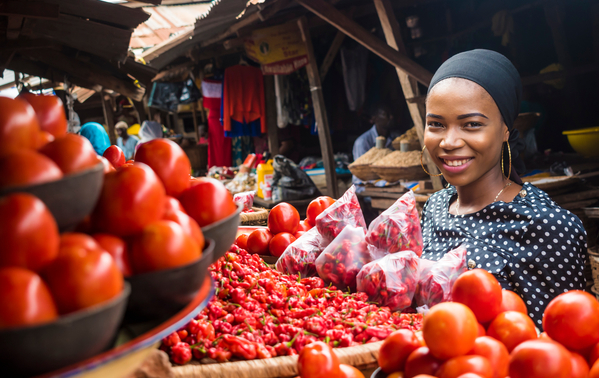In developing countries where agriculture comprises a significant part of the GDP, such as Nigeria and Ethiopia, agrifood value chains are very important, and the livelihoods of smallholder farmers depend on their development and performance. Agricultural and trade policies have implications well beyond the farm, including for consumers, producers, traders, and processors. In this context, it is necessary to measure the impact of policies along the entire agrifood value chain of a commodity in order to minimize unintended consequences of policies for all value chain actors.
We conducted two studies focusing on Ethiopian and Nigerian value chains, using nominal rates of protection (NRPs), a measure of how these policies affect prices for producers and consumers. The results are summarized in a policy brief. Prices may differ from the prevailing international market prices as a result of policies such as taxes, subsidies, minimum support prices, and government procurement.
The study on Nigerian agricultural value chains focuses on palm oil (of which Nigeria is a net importer) and cacao (net exporter).
For the palm oil value chain, NRPs at the border (2001-2012) are positive, showing that prices of palm oil entering the country are higher due to a protective trade policy. This helps producers, but hurts consumers since they are paying more. Due to protective trade policies and domestic policy, NRPs at the farmgate (2010, 2012) for palm oil are positive, showing producers have been subsidized.
Nigeria’s cocoa value chain is underdeveloped. NRPs at the border (2006-2014) for cacao beans and cocoa products are negative, i.e., border prices are lower than international reference prices. This may be due to the quality gap, the domination of the export market by a small number of Nigerian firms, and the influence in the international market of three large buyers. Despite domestic support policies, negative NRPs at the farmgate (2010, 2012) for cacao beans show that disincentives in the cacao beans export market reverberate through the domestic market.
In the analysis of these two value chains, NRPs at the farmgate were found to vary across regions within Nigeria. Regional and state-level policy frameworks explain some of the variations in prices that producers receive. Local conditions that impact price transmission can also contribute to regional heterogeneity in farmgate NRPs.
The study also shows the impact of high market access costs along the value chains, which impede the development of domestic value chains. Policies that increase access to inputs, enhance market access, and improve supply chain linkages can help both producers and consumers.
The case study in Ethiopia focuses on small ruminant value chains. Rural livelihoods in Ethiopia depend almost entirely on agriculture, and small ruminants play a crucial role as assets quickly convertible to cash. Farmers however, struggle in the markets such that they hardly make any profit even with underreported costs of production. There is, therefore, a need to provide systematic analysis of the effects of policy induced price distortions on the agricultural sector to reveal key causes and consequences of the challenges faced by farmers.
The study estimates national and district level NRPs for a five-year period (2010–2015). The study finds that the observed and adjusted price gaps at the farmgate and the point of competition node of the value chains relative to a comparable reference price for both sheep and goats are negative. This indicates a strong deviation of producer and retailer prices from the comparable reference prices (based on prevailing prices in international markets).
The consistently negative NRP results show that the restrictive policies of the government have negatively affected the farm households, reducing the prices farmers would have received in a market without policy distortions. Overall, producer NRPs were lower than retail point NRPs, implying that farmers are at a greater disadvantage, although both retailers and producers are being disincentivized. If there is such a large gap between retail and farmgate prices, the study asks the question, “how is this pie shared along the value chain by traders, marketers, and sellers?”
The evidence suggests that Ethiopian farmers and retailers are operating with considerable disincentives within a market, requiring a serious revision of the grass roots level institutions and policies that increase the burden on farmers and traders. Finally, the study recommends less illicit and explicit taxing and more support, empowering farmers through, for instance, improving access to information, encouraging collective action, and investing on market infrastructure.
Both studies show that encouraging the development of value chains can benefit both smallholders and consumers. To do this efficiently and in a manner that avoids overlapping and opposing outcomes, an analysis of policy distortions along the value chain is necessary. The type of analysis provided in these two studies can aid policymakers in deciding where along the value chain to focus their interventions.
Girma Kassie is a Senior Agricultural Market Economist with the International Center for Agricultural Research in the Dry Areas (ICARDA); Simla Tokgoz is a Research Fellow with IFPRI’s Markets, Trade, and Institutions Division.
This work was supported by the IFPRI-led CGIAR Research Program on Policies, Institutions, and Markets (PIM).



